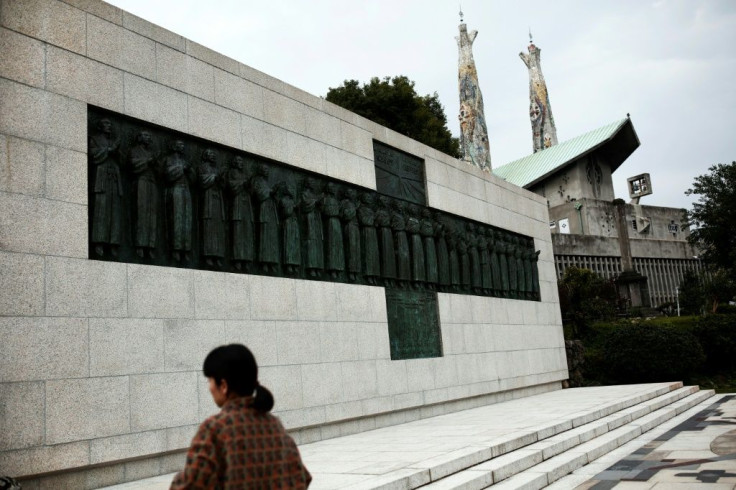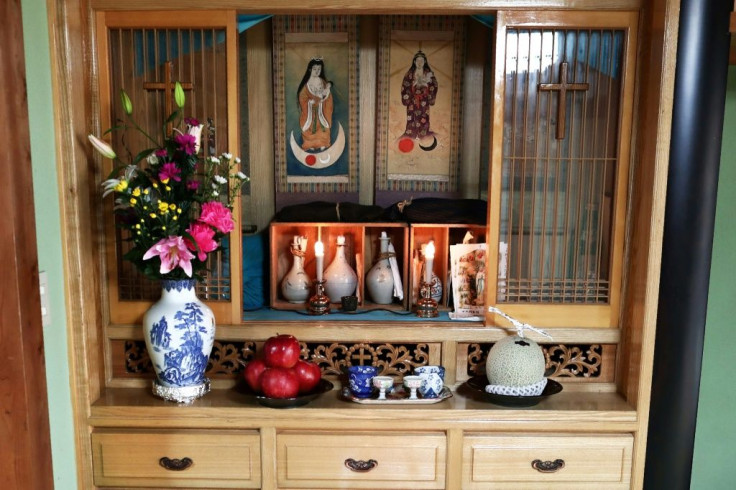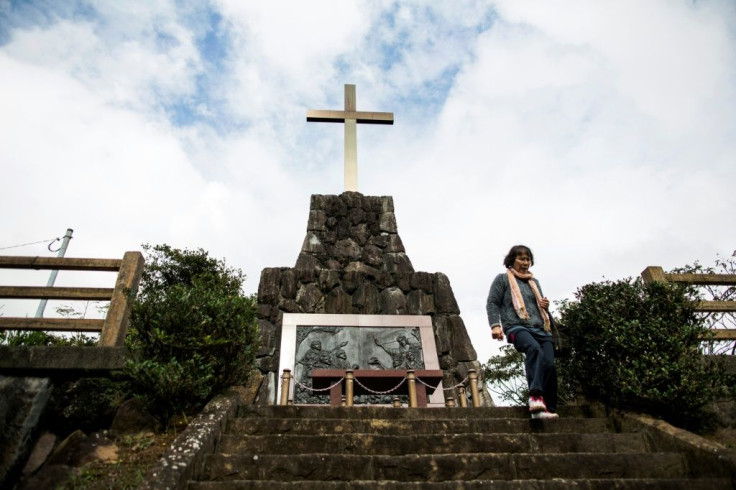Pope Francis To Pay Tribute To Japan's 'Hidden Christians'

When Pope Francis visits the Japanese city of Nagasaki, he will pay tribute to a sometimes forgotten population of so-called "hidden Christians" who clung to their faith for centuries despite brutal persecution.
The story of the Japanese converted by visiting European missionaries was brought to the big screen in 2016 by director Martin Scorsese, in an adaptation of the novel "Silence".
But the pope's visit is likely to bring further attention to a group of Christians who developed a unique, blended faith that contains traditions their descendants still follow today.
The pope will tread in the footsteps of another Jesuit -- the Spanish missionary Francis Xavier, who arrived in Japan's southern Kagoshima in 1549 with two companions.
He was followed by Portuguese missionaries who drew hundreds of thousands of Japanese to the faith.
But their success provoked a backlash: Christianity was banned, the priests were expelled, and converts who refused to recant faced being crucified, set alight or slowly drowned.
From 1639, Japan was closed to the outside world and it would not reopen for more than two centuries.
The persecution did not eradicate the Christian community, but hiding their religion became a matter of life and death for converts in Japan.

Whether to camouflage their beliefs or to adapt to an environment without priests and bibles, the hidden Christians created a blended faith that was "discovered" by an astonished French missionary in 1865.
A group of nervous peasants approached the man and a woman whispered "our hearts are the same as yours", revealing the previously unknown existence of what turned out to be around 60,000 descendants of the original Christians.

"They were able to keep their faith without priests and bibles for so long. There is no other such case in the history of the Church," father Domenico Vitali, director of the Twenty-Six Martyrs Museum in Nagasaki told AFP.
The pope will visit the site, home to a monument to some of the hidden Christians, called kakure kirishitan in Japan.
Today, striking vestiges of the community remain, with locals reciting prayers in a mixture of Japanese, Latin and Portuguese, making the sign of the cross, and singing acappella hymns.
Despite their Christian roots, the multilingual prayers, known as orasho, are not meant to honour God or any Christian figure, Japanese rice farmer Masatsugu Tanimoto told AFP in 2016.
"We say 'Mary' several times but we're not praying to her. We don't refer to a specific god either, but rather to our ancestors," he said.

The prayers are evidence of the syncretic blend that years of isolation produced.
The Virgin Mary took the form of Kannon, the Buddhist goddess of mercy, while Ave Maria became the somewhat similar "Abe Maruya".
"Isolated, they had no choice but to recreate their beliefs as faithfully as possible," said Shigeo Nakazono, an ethnologist at the local Ikitsuki Island Museum.
"It's a fully fledged regional religion that, while rooted in Christianity, was cut off from the Vatican," he told AFP.
"The cultural value of the hidden Christians is the very fact that they preserved this Christian faith."
Many descendants of the hidden Christians never joined the church and struggle to identify with traditional Christianity.
Even those who honour some of their ancestors' traditions are not counted among the approximately 440,000 Japanese Roman Catholics.
A handful of hidden Christians will attend a papal mass in Nagasaki, but Nakazono said "the pope's visit will not change anything in the relations between the Vatican and the hidden Christians".
For many descendants of the original converts, their Christian ancestry is just one part of a complicated puzzle, as evidenced by the home of fisherman Masaichi Kawasaki.
His living room features four altars: one devoted to Buddhism, another for his ancestors -- common in rural Japanese homes -- and a third for the Shinto faith.
The last one features a cross, candles and a kimono-clad woman with long black hair holding a child -- an unmistakable image of the Virgin Mary.
His house even has tiny white paper crosses like the ones his ancestors placed in the ears of their deceased relatives.
"It was part of my daily life growing up as a child, a bit like one assimilates a habit into everyday life," he told AFP.
"It was only natural that I would learn this practice."
uh-qt/sah/ric/jah/gle
© Copyright AFP {{Year}}. All rights reserved.





















